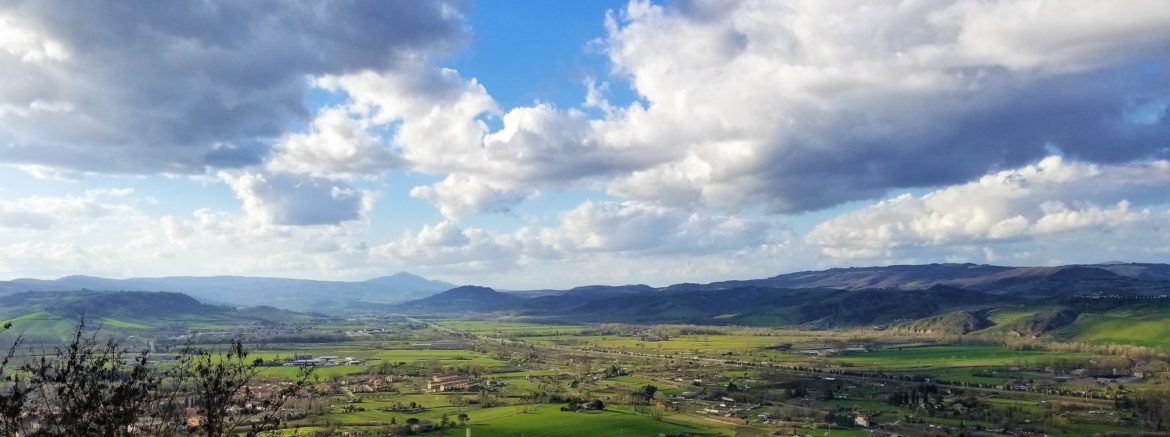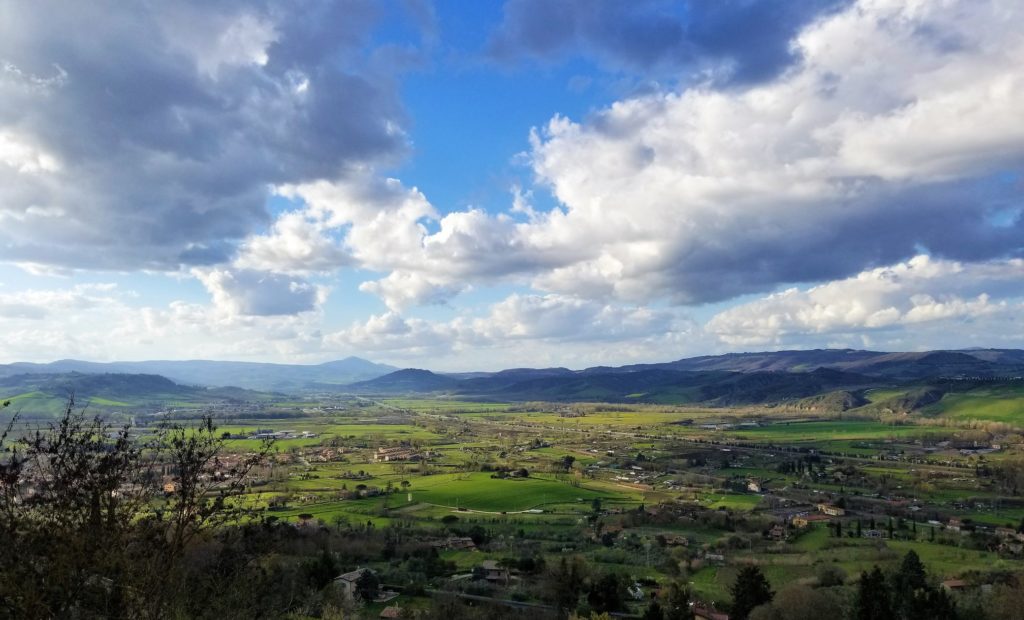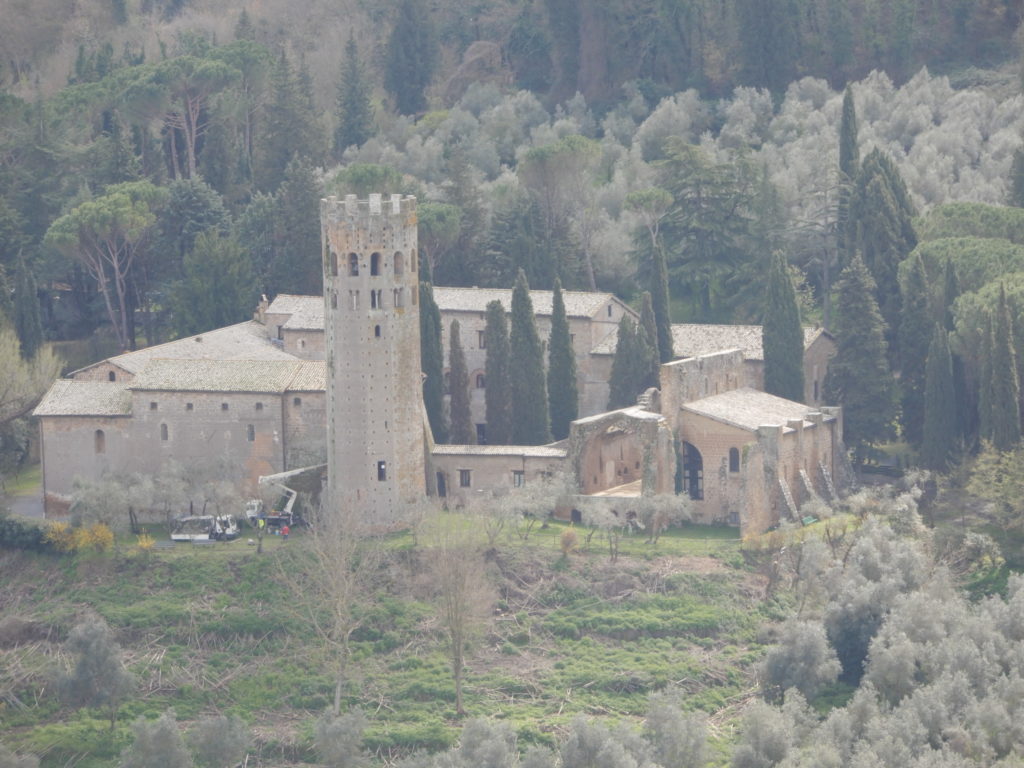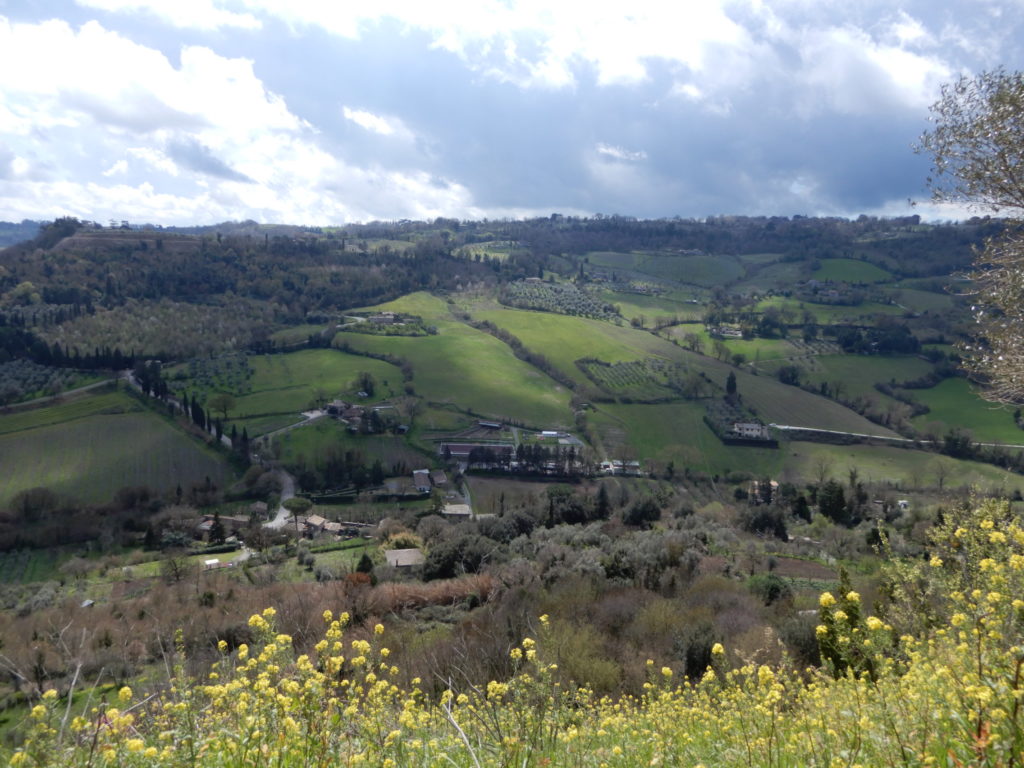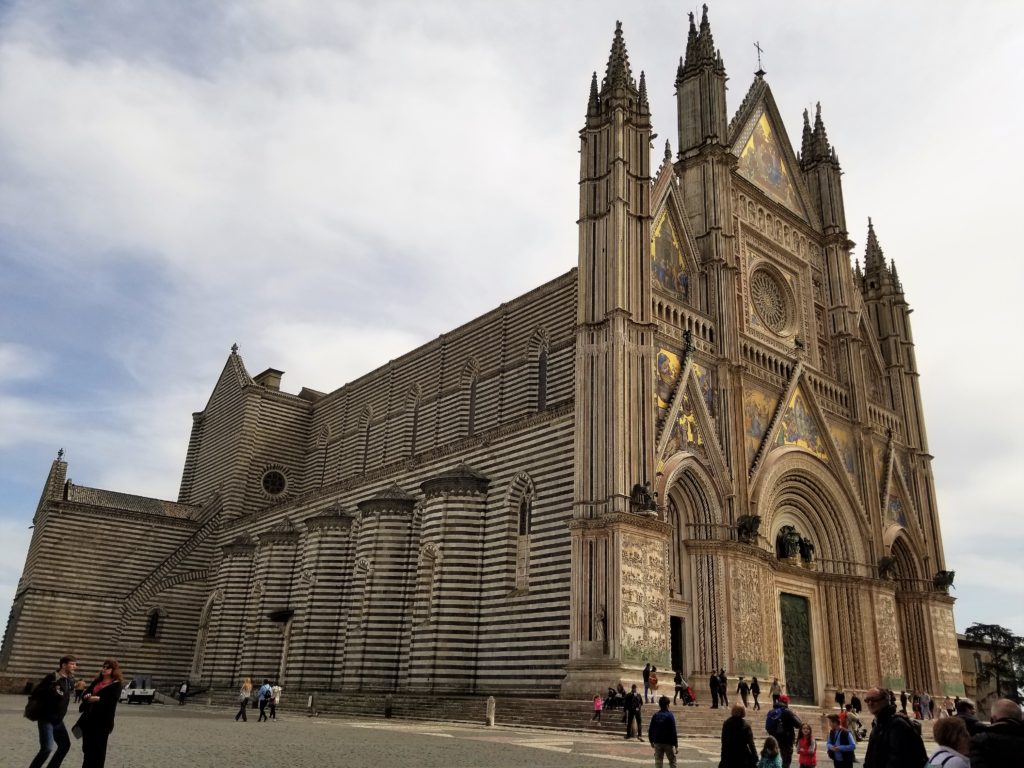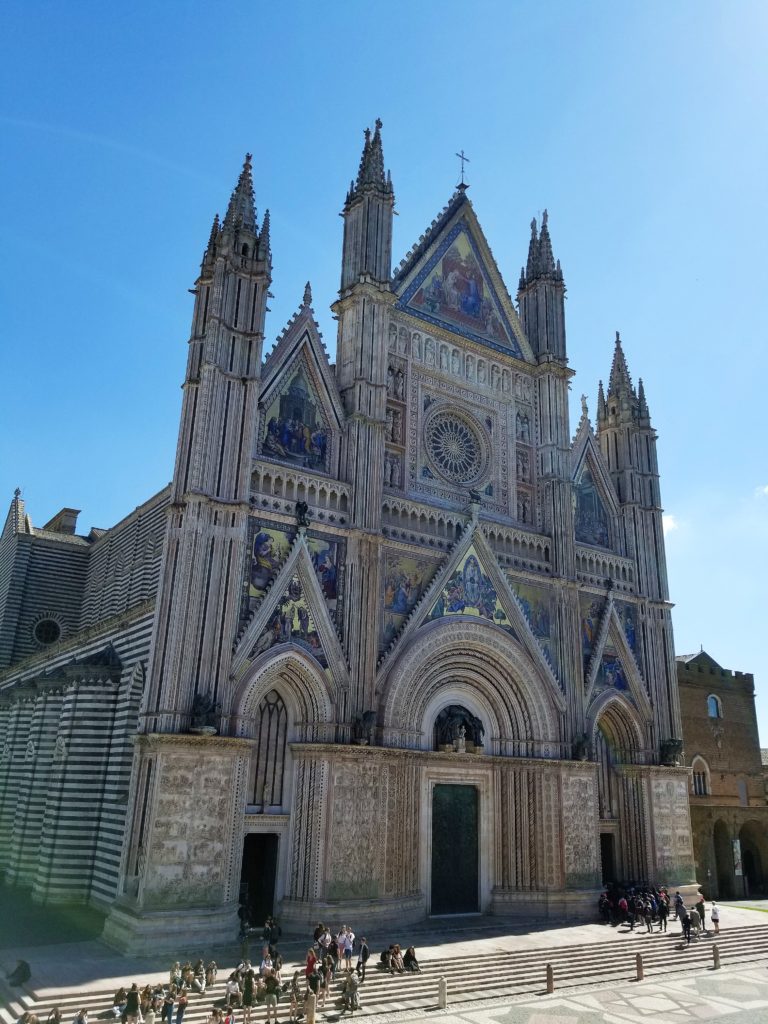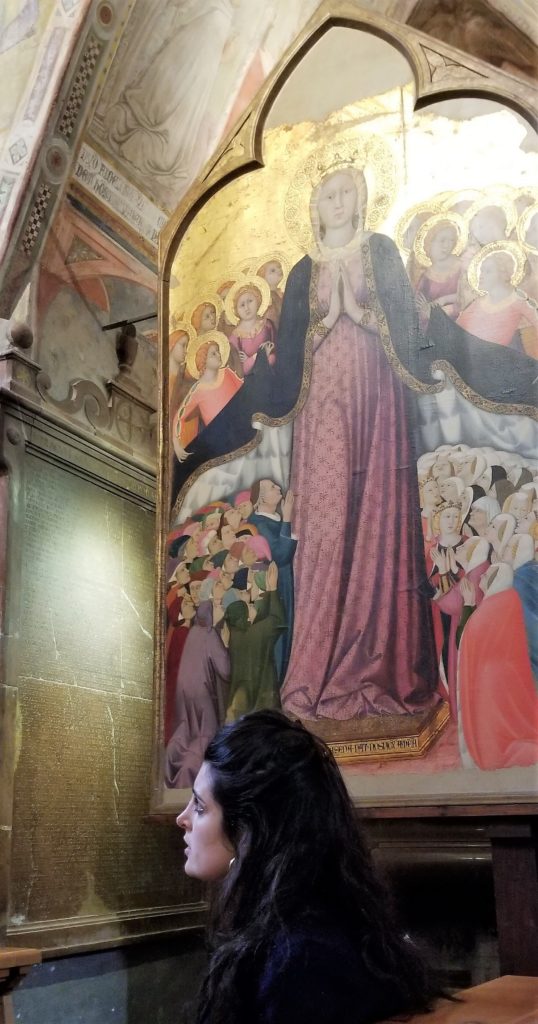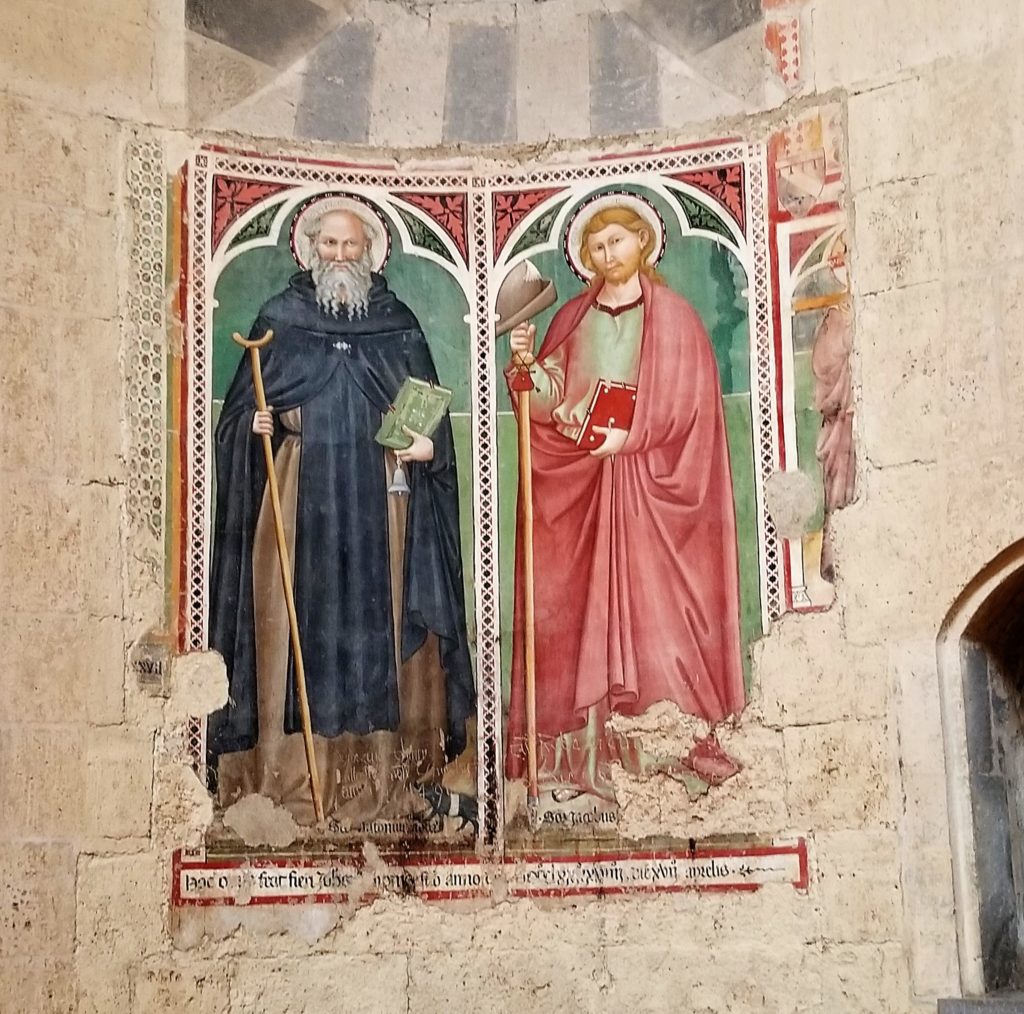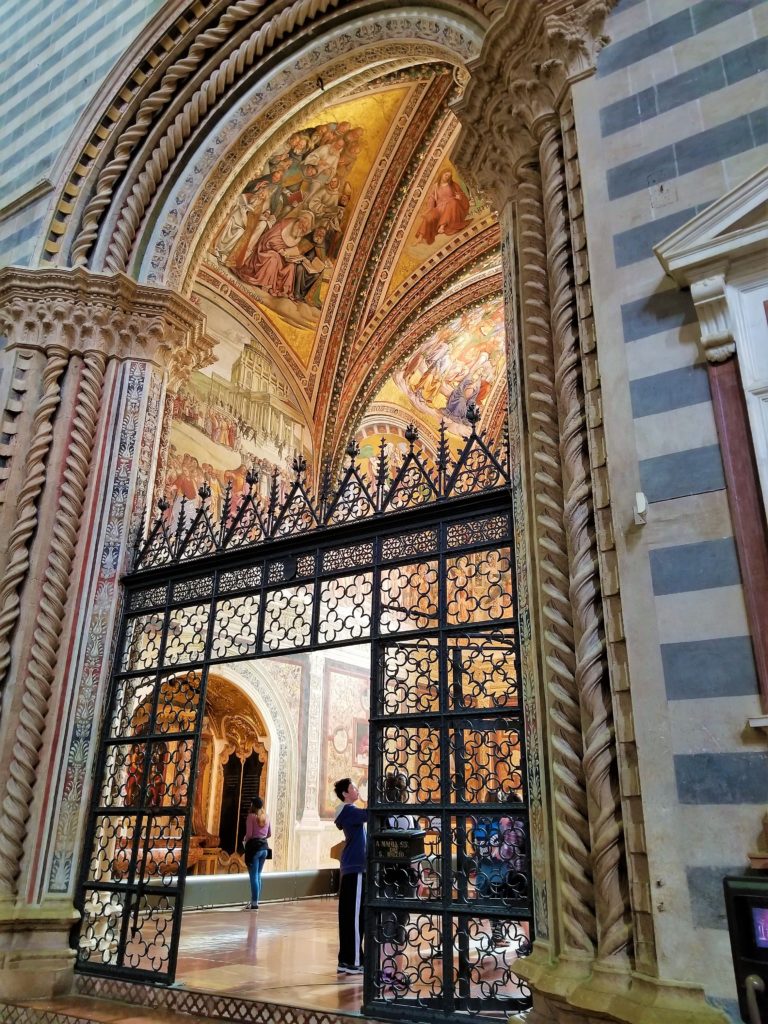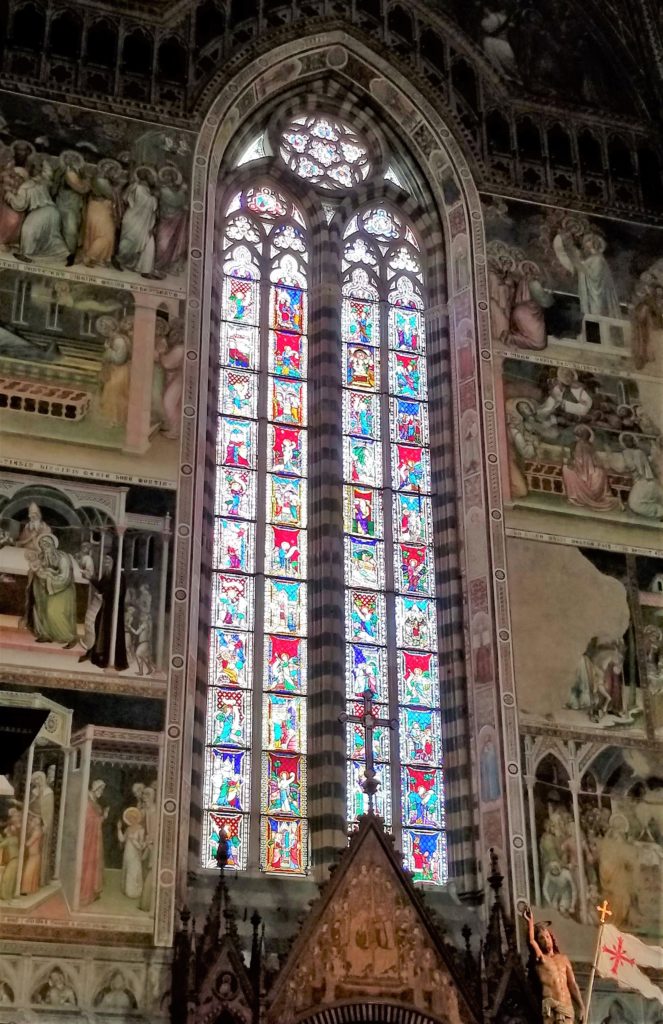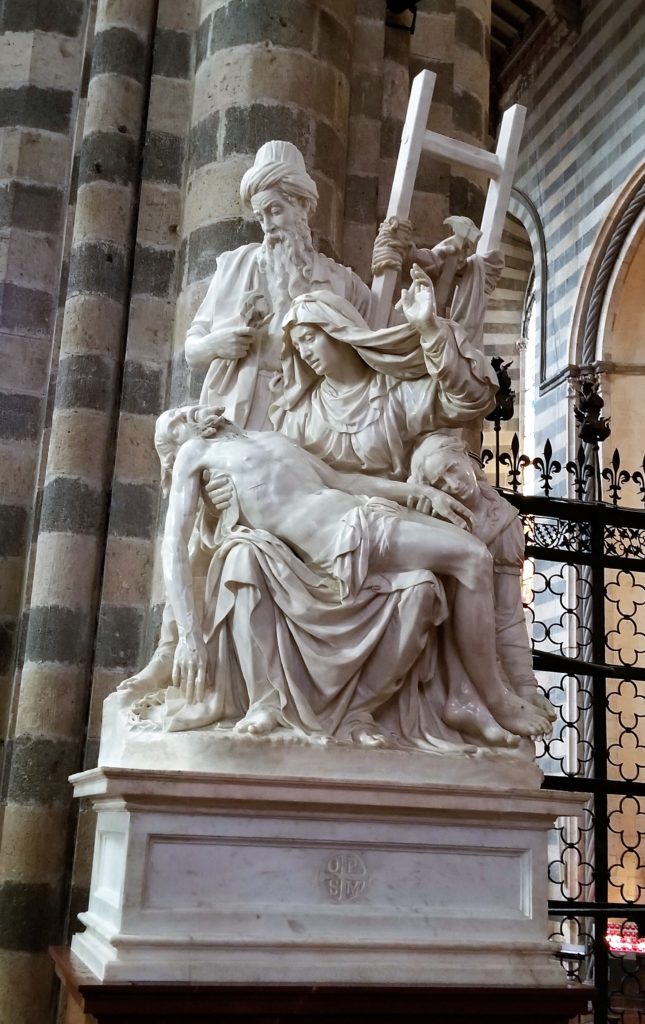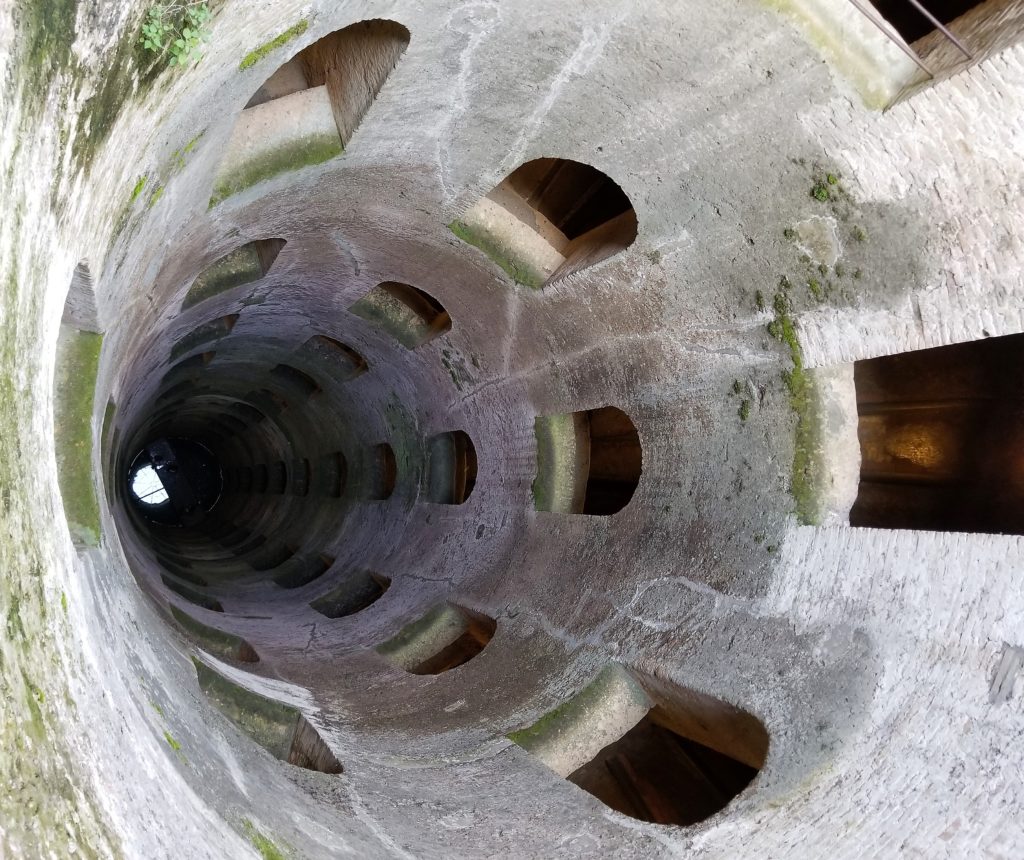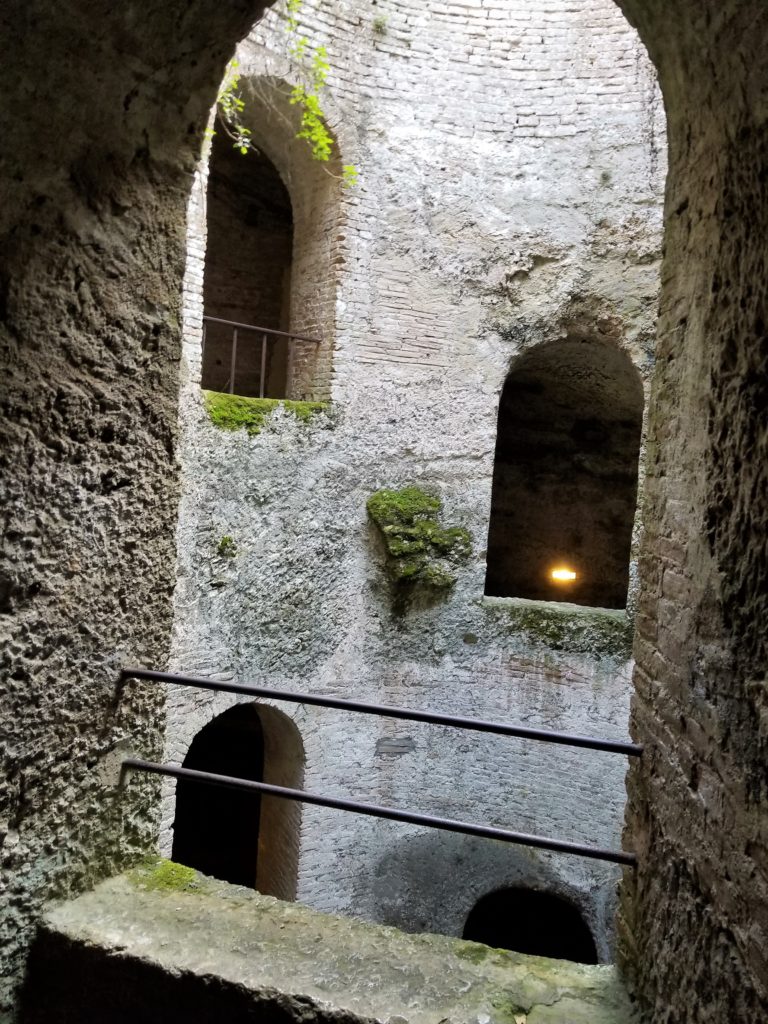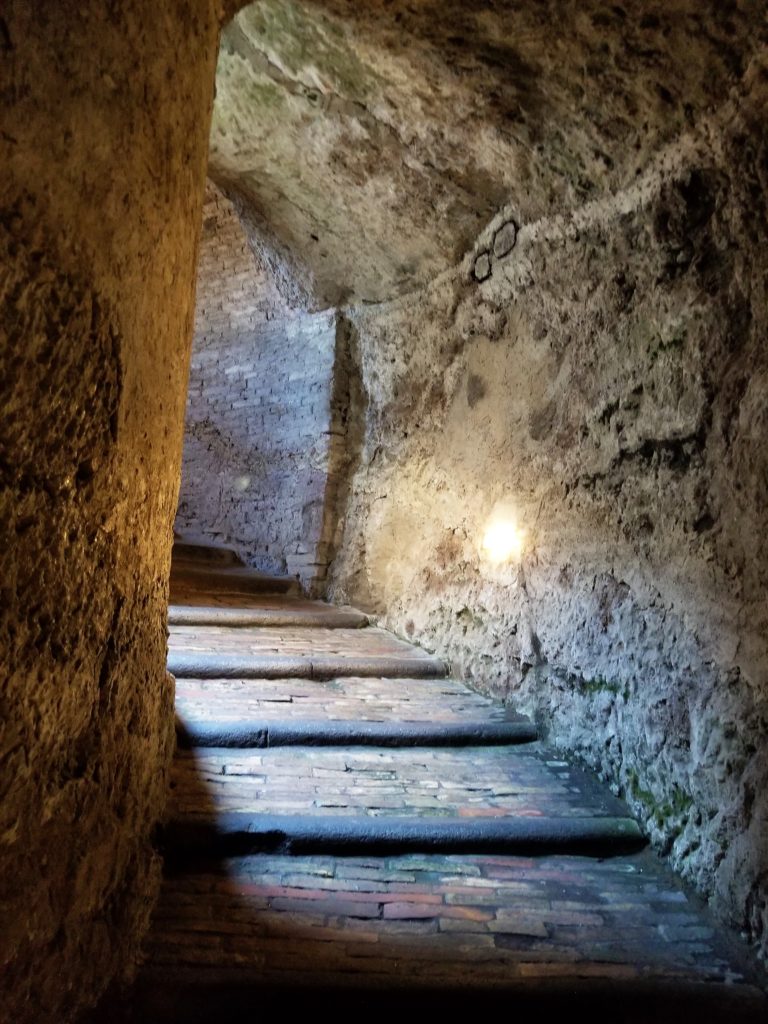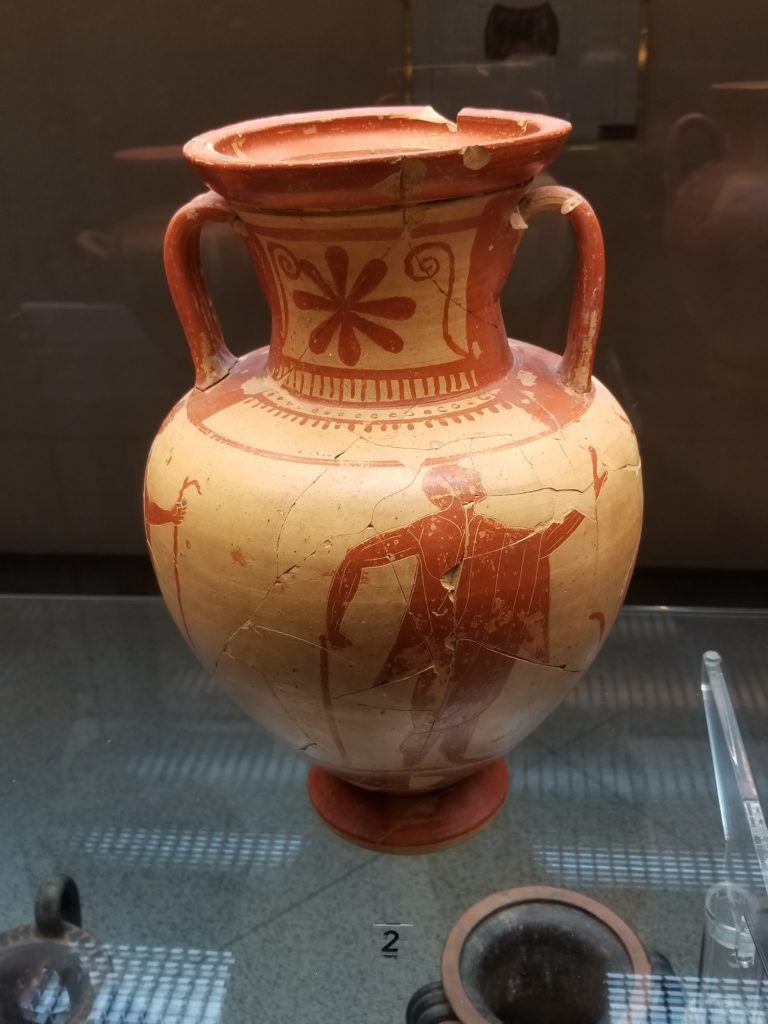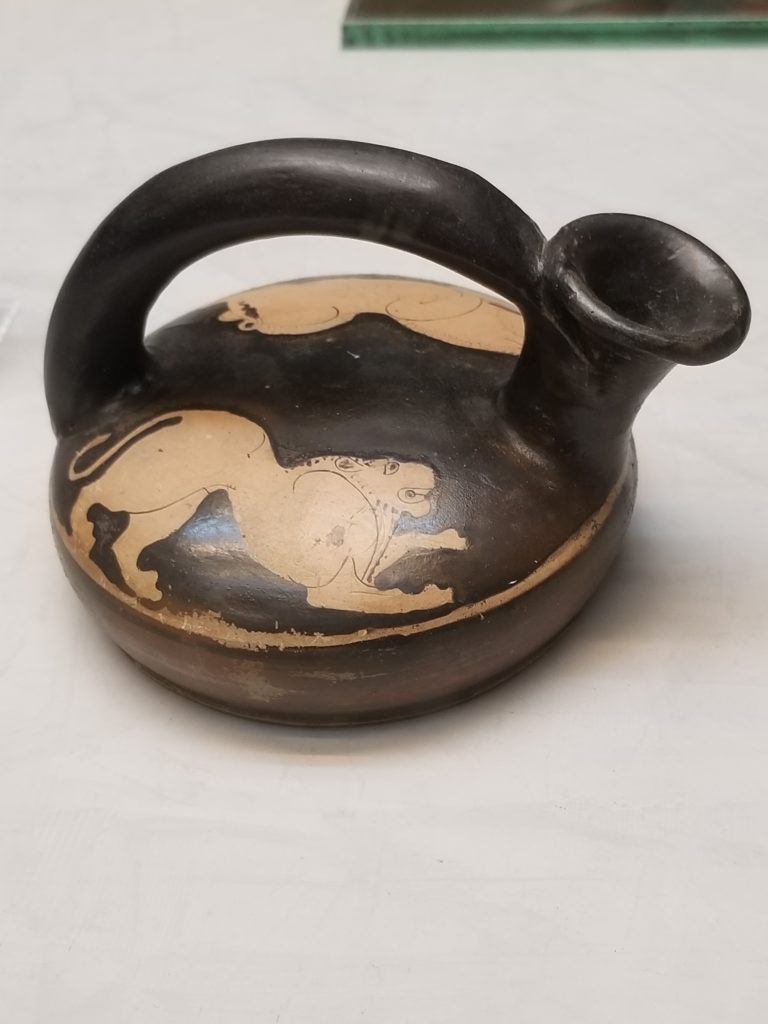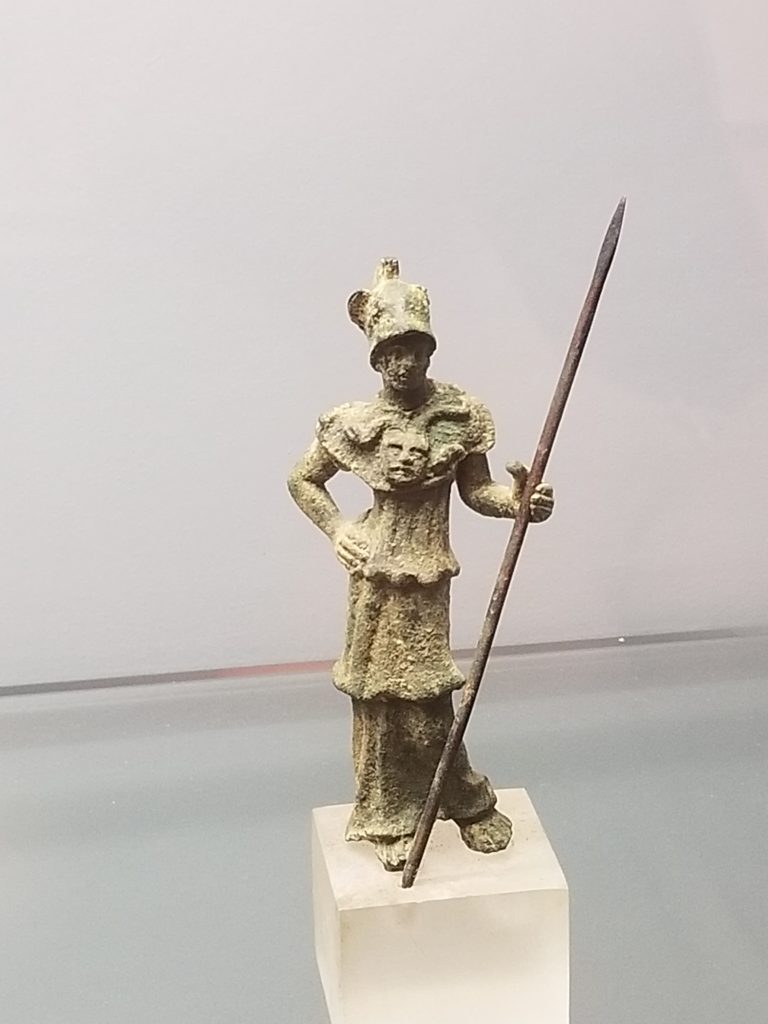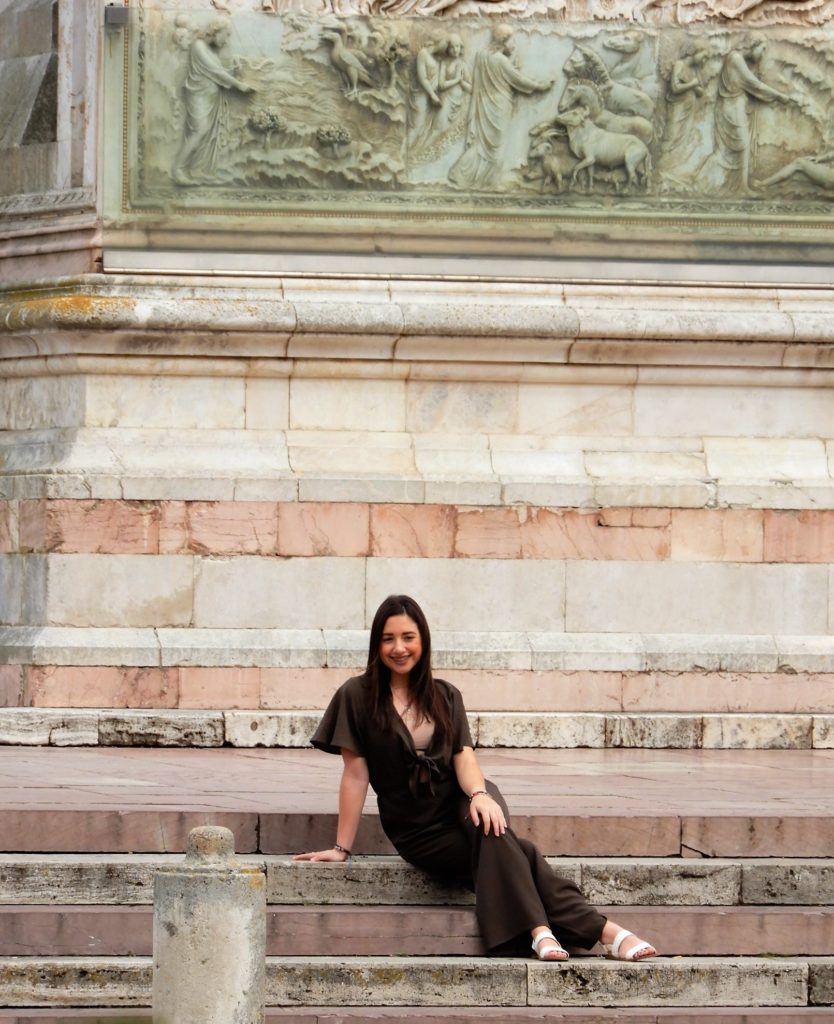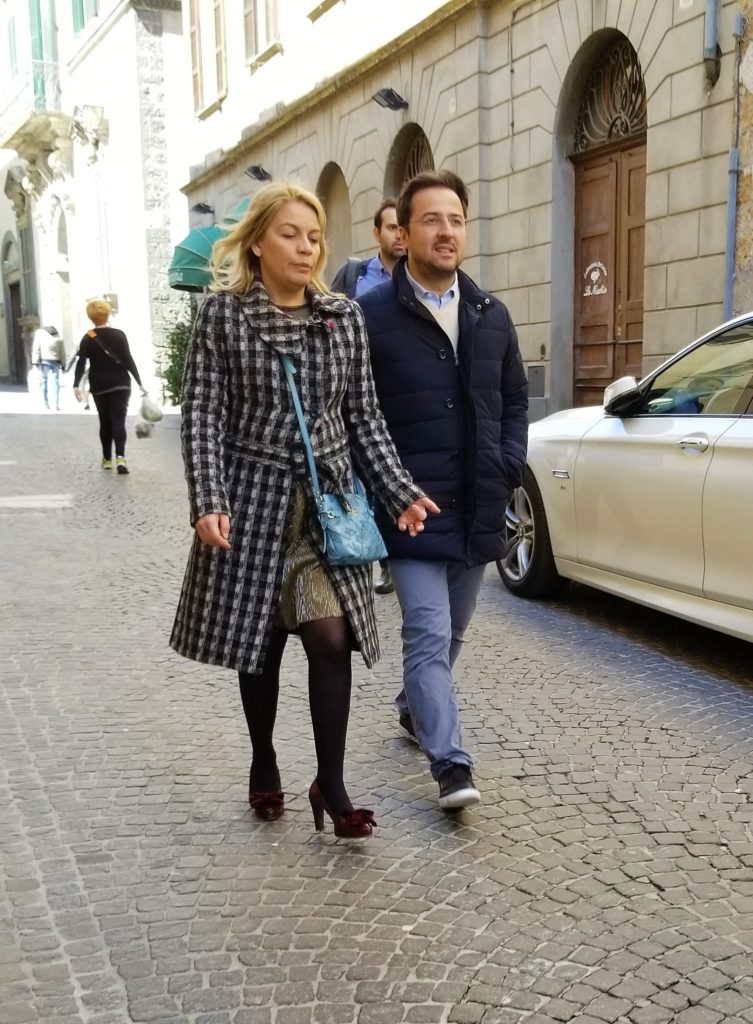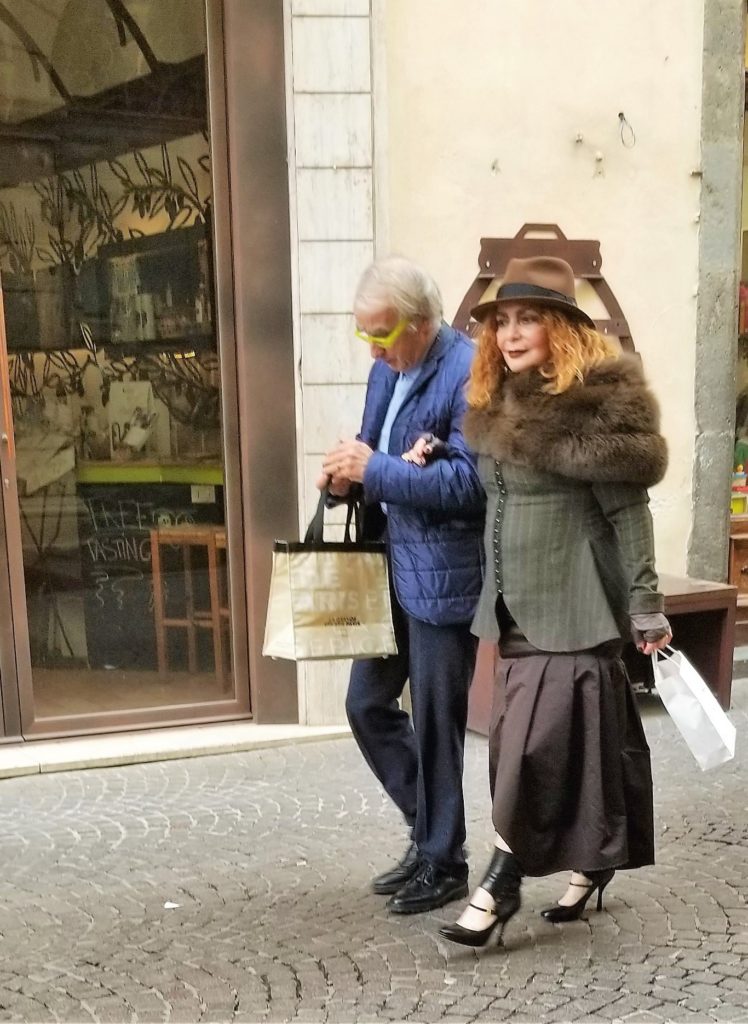Five Days in Orvieto
Time to leave Sorrento and all aboard for Orvieto, Italy! The next destination of our two months in Italy is this Umbrian hill town. Funny thing, a couple of years ago neither of us had even heard of Orvieto, that changed as soon as we began talking to folks about our retirement travel adventure. After the big Italian destinations like Rome and Florence, Orvieto bubbled to the surface often and was named a favorite, and magical, destination. We decided we couldn’t pass up the chance to visit this history-filled 2700 year-old-town during our two months in Italy.
Getting There
Unless you drive there isn’t a straight shot from the Sorrento Peninsula to Orvieto. Basically, we needed to get from our remote hotel high up the mountain on the Sorrento peninsula across the bay to the Naples Centrale train station where we would catch an intercity train to Orvieto. Three options we found for the trip from Sorrento to Naples are: riding the local “Circumvesuviana” train, taking the high-speed ferry, or taking a taxi from our remote Sorrento hotel to Naples. Because we have heavy bags we decided a taxi to pick us up and deliver us door to door was easiest. The least expensive option would be the Circumvesuviana train, the fastest option would be the high-speed ferry.
Once on the intercity rail to Orvieto we pulled out the laptops to catch up on emails. But the beautiful views from the train’s picture windows kept drawing our attention away.
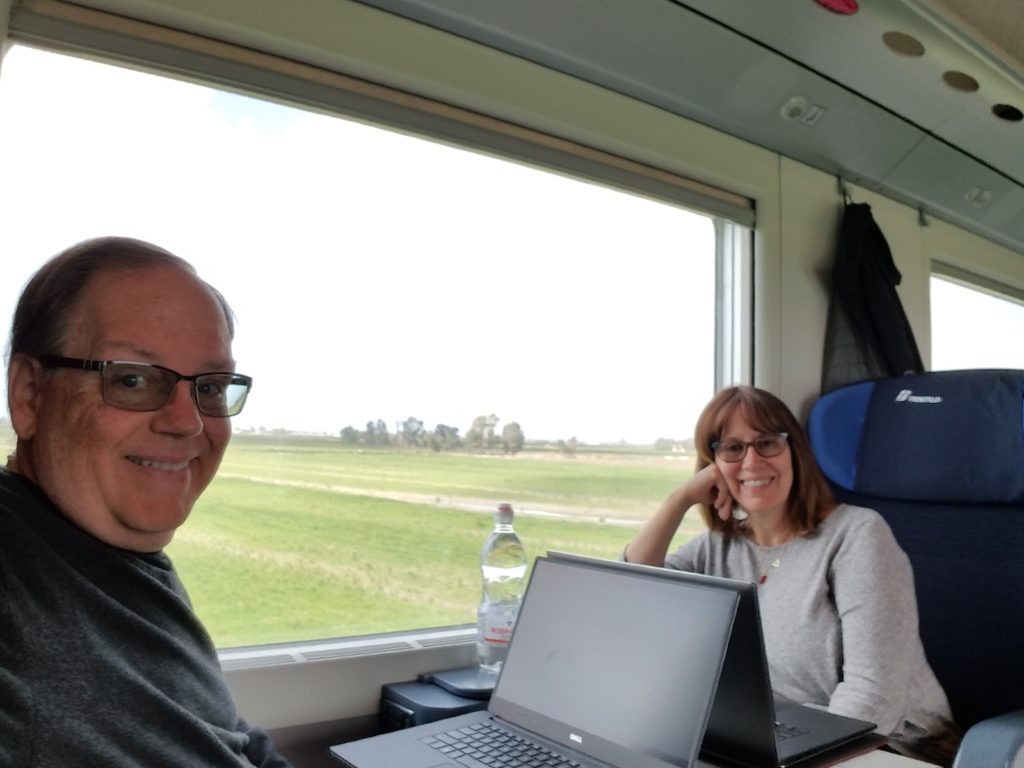
After about three hours we rolled into the Orvieto Station and we were both excited to be embarking on the start of five days in a place that had been recommended by our well-travelled friends. After disembarking the train we rolled our duffel bags across a sleepy traffic circle to the funicular that runs from the modern lower town to upper historic Orvieto.
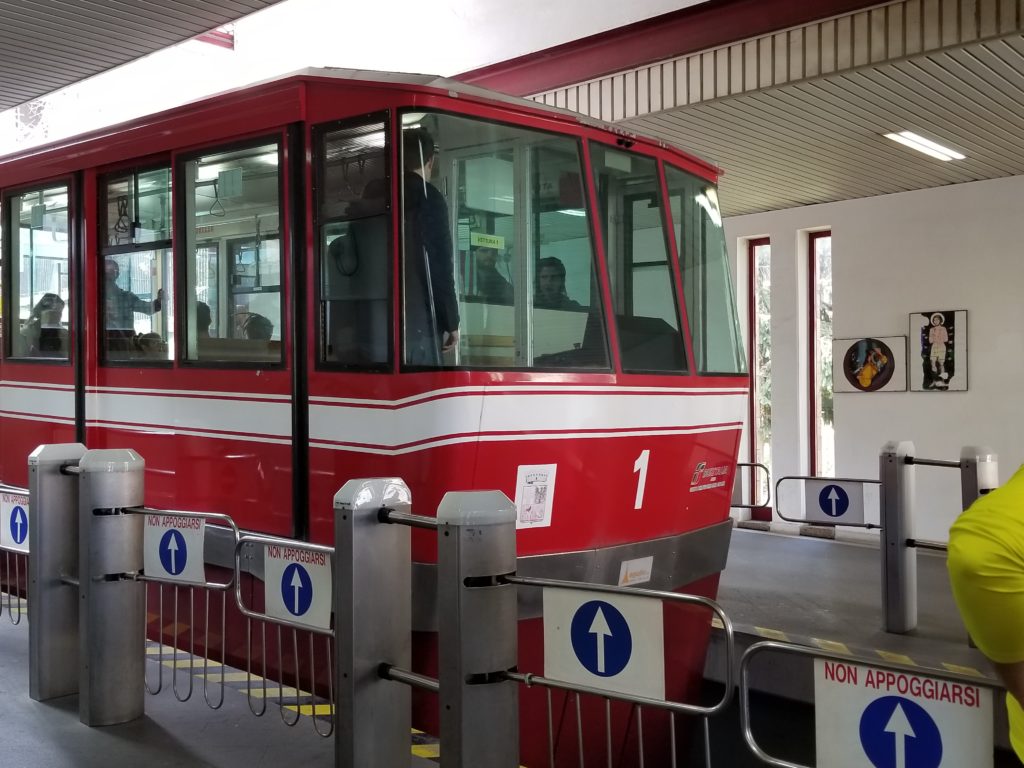
Our Airbnb host, Jasmina, had instructed us to wait for a “C” bus at the top of the Funicular. After watching several “A” busses and “B” busses go by we grew concerned about locating the “C” Bus. We called Jasmina for guidance and she readily offered to pick us up at the station to our relief. As it turned out, the “C” bus was not running that day because it was Easter Monday — the day after Easter and a major business holiday in Italy. Five weeks into our two months in Italy we have learned that this country celebrates many holidays and transportation is often on a reduced schedule on those days. Something travelers need to be aware of
Setting up House in a 600-Year-Old Row House
Jasmina drove us down this tiny narrow lane to the Airbnb which is actually just one of several units within the Bed & Breakfast she operates. We were surprised to find there were three steep flights of stairs to reach our attic space unit. After booking several Airbnb units we now know that in Europe there are going to be stairs and no elevator unless you are in a modern building or elevator. Medieval construction = stairs. Silly us! We now know to ask the host beforehand how many stairs there are. We are in luck today because Jasmina’s son has kindly offered to help us with our luggage.
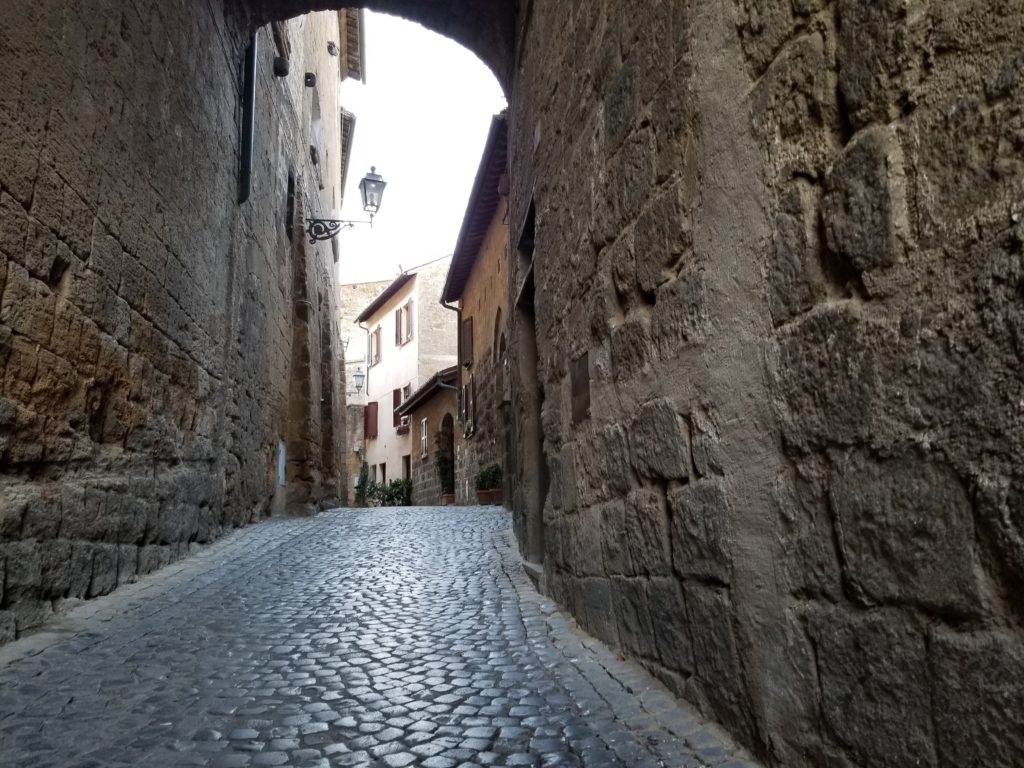
Stairs aside, We love the unit and Jasmina is a fantastic host. Barbara especially is taken with the separate eat-in kitchen with windows that open onto the lane. It is well equipped with full size appliances and in the European style we like. One thing we have enjoyed about Airbnb is the opportunity to try out, at least for a little while, bright red lacquer cabinets!
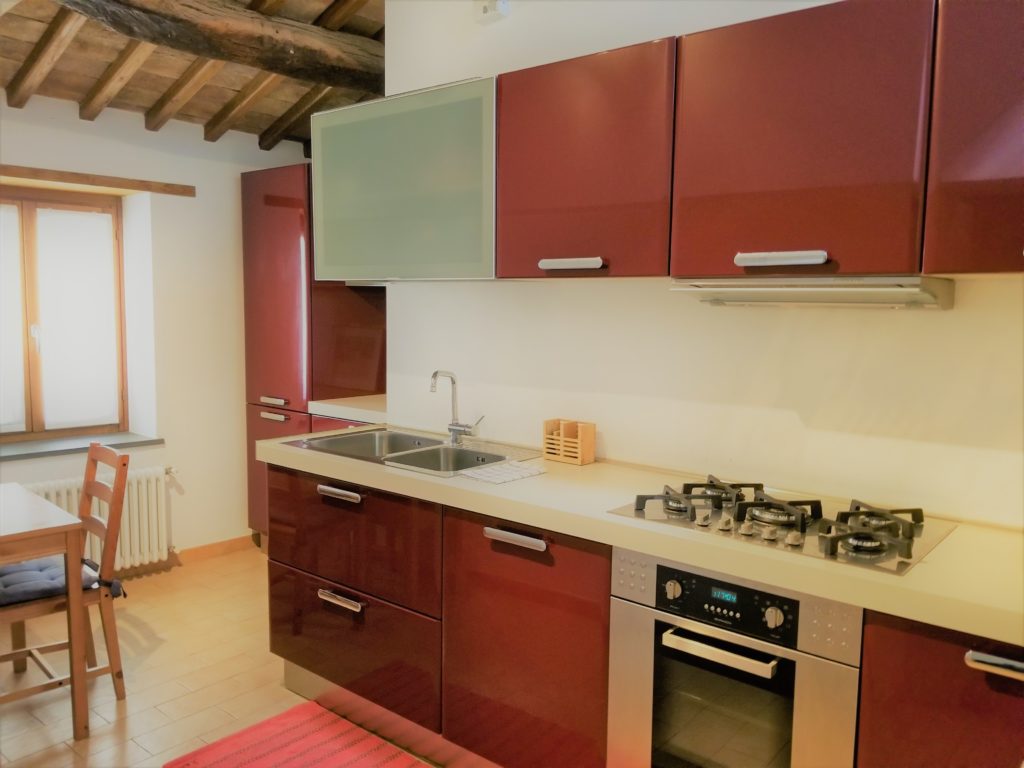
You can see more here: apartment in medieval hilltown
Orvieto is small and very walkable. There is a lower walk that completely encircles the town and is about 5 kilometers in length. There are also walks along the ancient city walls that have especially beautiful views.
Touring Orvieto the easy way: Carta Unica Visitor Card
We researched and found that Orvieto has a visitor card called Carta Unica good for admission at nearly all museums and visitor attractions. It costs 20 euros for a full price adult and is good for one entry to each attraction until the end of the year purchased in. Carta Unica also offers some discounts with some hotels, restaurants, and shops. We found it’s worthwhile to make the single purchase and use it as much as you like simply because you aren’t having to buy individual tickets each time you want to enter a museum. You can purchase a card at the Information Point behind the rail station or at the Underground Tour office in the Duomo piazza.
Modern Art Museum Emilio Greco
This small museum is dedicated to sculptures by the Italian sculpture Emilio Greco. His monumental bronze sculptures, mostly nudes, are on exhibit in some of the best known museums in the world, such as the Tate Modern in London. We enjoyed our short visit to this museum.
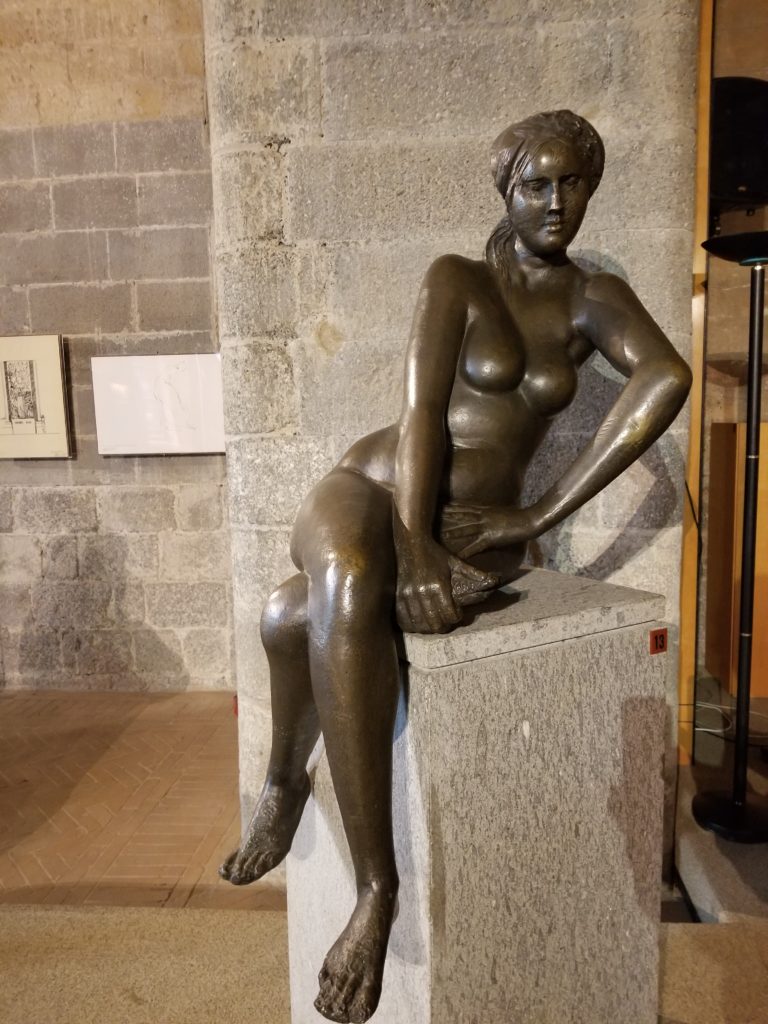
Orvieto Cathedral – The Duomo
This massively imposing black and white striped cathedral is the real star of Orvieto and considered to be a glorious example of Italian Gothic architecture. You come to tour the inside with its ornate frescos, enormous doors and intricate reliefs, carvings and sculptures. However, there is so much detail on the exterior that you can actually spend hours outside sitting on one of the benches admiring the rich, opulent adornment of the façade. It is a true work of enduring art. It took centuries to build which we find that hard to conceive. We can’t imagine the project management necessary to keep a massive project on course over many generations! Wouldn’t changing architectural trends, community needs, and financial priorities have derailed the project from time-to-time? In any event, the cathedral is breathtaking and enduringly beautiful.
Orvieto Underground Tour
Orvieto has been continuously settled for 2700 years and pre-dates the Roman era. The early inhabitants, the Etruscans dug caves and wells for water in the soft lava material (tufa) that makes up the hill that Orvieto perches upon. The caves and water source enabled the Etruscans to literally hole up when invaders attacked. The practice of digging caves continued for about 2500 years and now there is thought to be about 1200 caves. Once you see the size of Orvieto this is a mind-boggling concept. The hill must look like Swiss cheese. The government is mitigating any ground weakness by engineering underground columns and prohibiting new caves or alterations to existing caves.
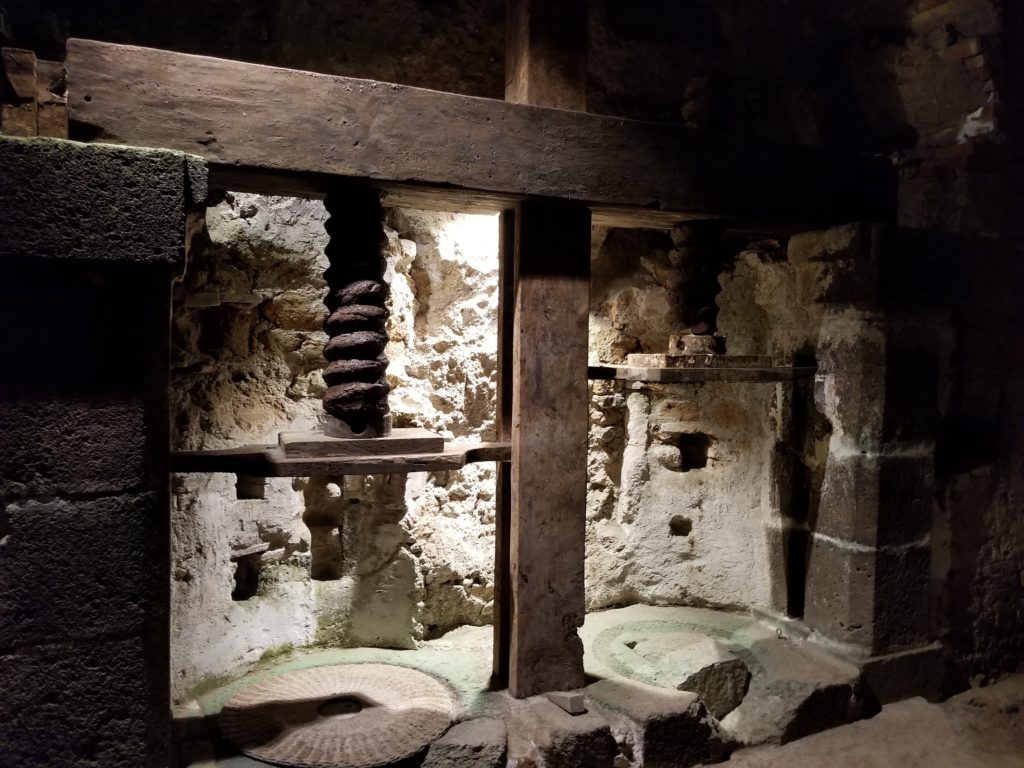
The Etruscans were experts at digging and were of small stature and could climb down these small wells that were about 2′ x 3′ using the foot and hand holds seen on the bottom side of the well.
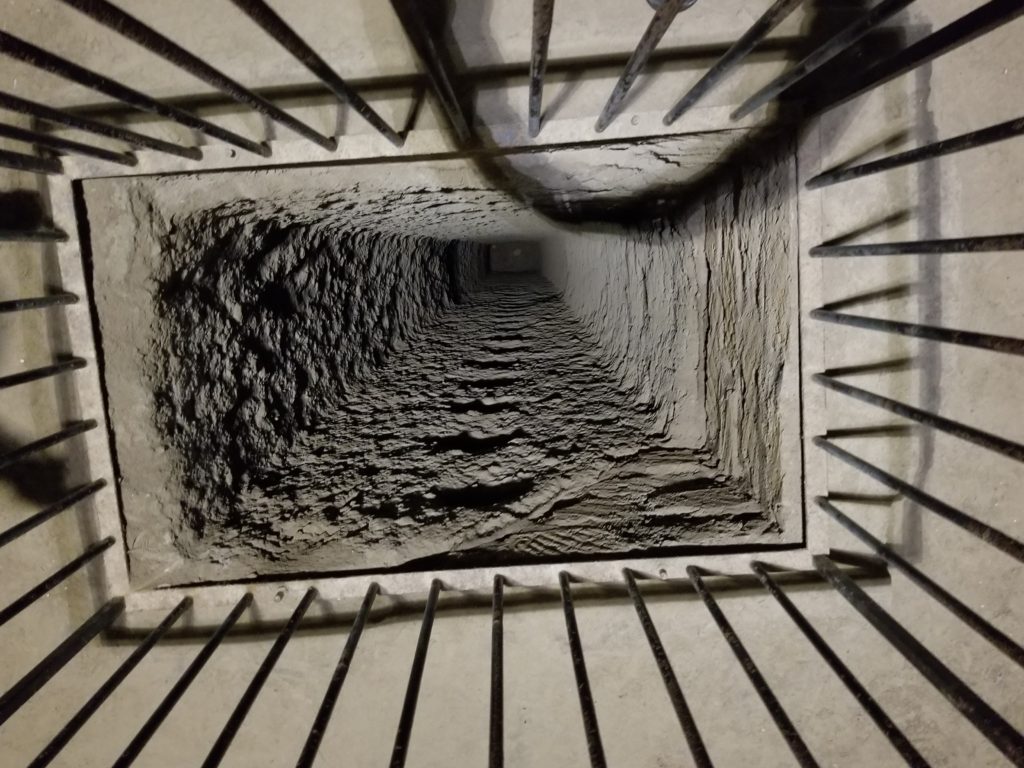
In medieval times wealthy people raised pigeons in these pigeon roosts. Pigeons were more efficient to raise than domestic fowl because they flew out of the roosts each day, caught their own food and returned in the evening.
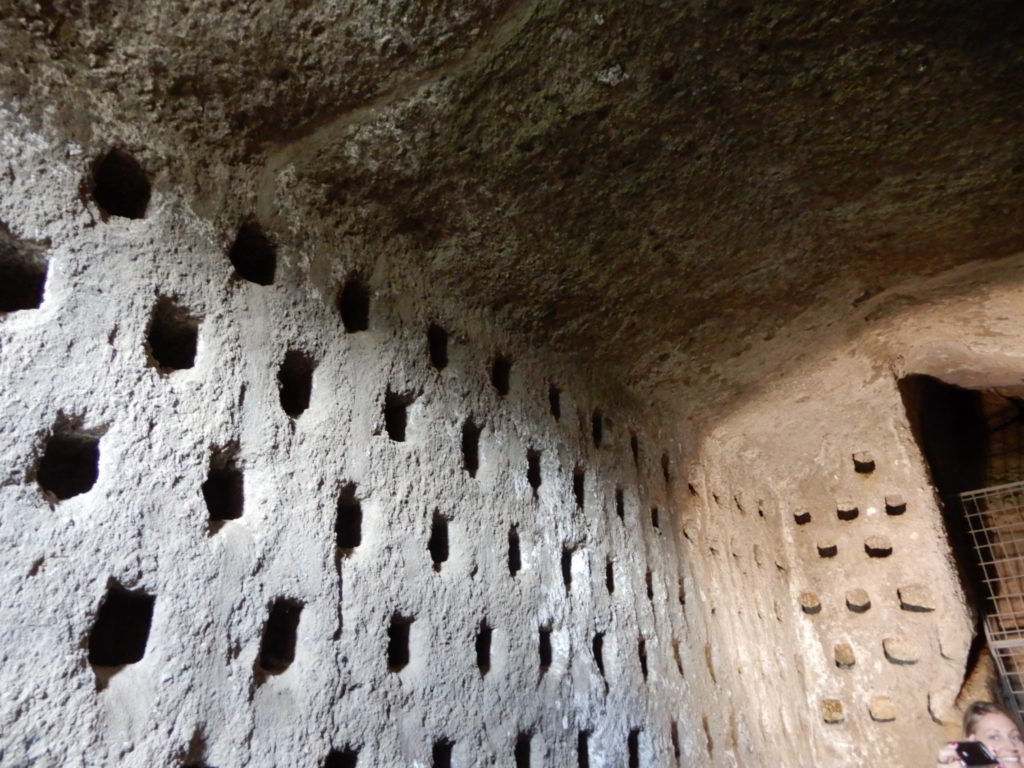
St. Patrick’s Well and Fortress
We took a trip down St. Patrick’s well. This is the ingenious double-helix design that allows persons to walk down the stairs to fetch water and bring it up a separate staircase without crossing paths with someone in the opposite direction. The well was built during the 16th century and there are 248 steps.
Albornoz Fortress
Near the funicular station is an old fortress which is a public area not requiring an admission ticket. It was a warm spring day with families enjoying the grassy lawns and walking along the fortified walls to enjoy the views.
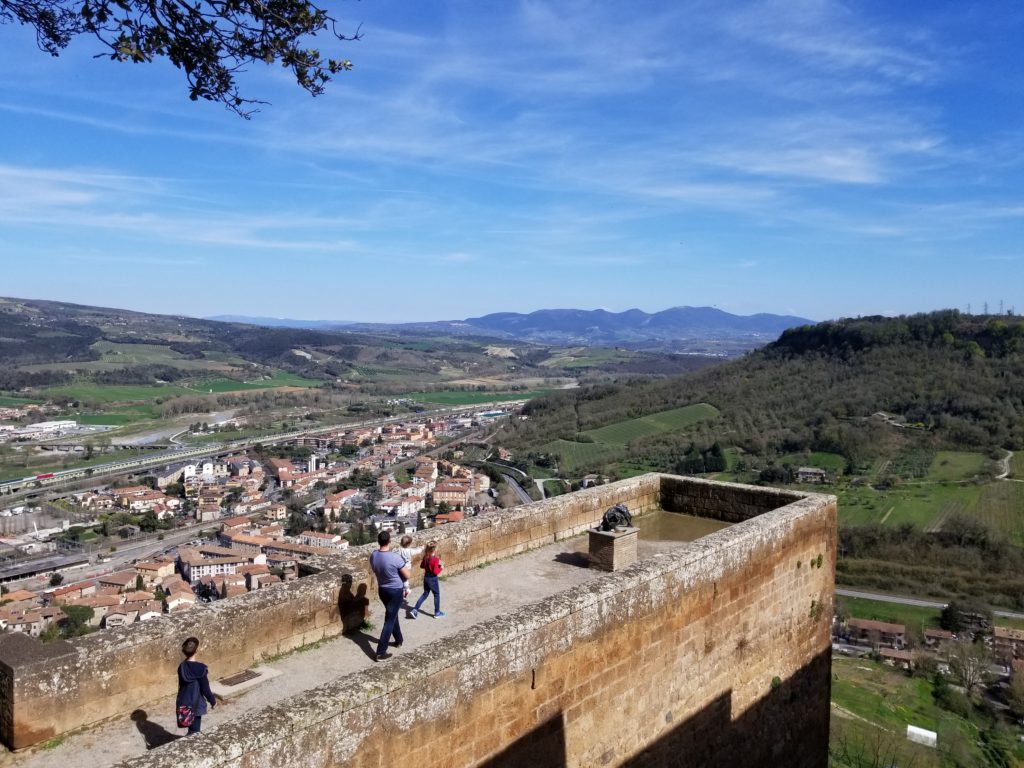
Etruscan Art
We visited a couple of museums with some fascinating Etruscan art pieces. the National Archaeological Museum and the Claudio Faina Museum, both located at the Duomo Piazza. Below are some examples of what is on view in these museums.
Orvieto Easy to Get Around
Orvieto has a main road that runs through it. Before our visit, we were under the impression that the town was car free. Definitely, not true. There are plenty of cars and plenty of roads that allow them. Also, many scooters. There are a few stop signs and no traffic lights and very few roads that vehicles are absolutely prohibited on. Only a few roads have defined pedestrian walking areas. You do need to be on the watch for cars before you cross a street. Nevertheless, Orvieto is easy to walk around and very compact. You could try to get lost, but you would be found in a few minutes. It’s a lovely place to explore.
Orvieto Good Food
We found tons of good restaurants and cafes when we got tired of eating at home and they were all very good. Wild boar is on almost all menus and is a traditional food here. We didn’t try it but heard it is good. One of our favorite places to stop in for a coffee, snack, cocktail, or dessert was open early until late is called Caffè Montanucci.
Orvieto Fashion and Style
There seems to be a strong retail clothing influence here, some big names like United Colors of Benetton has a couple of outlets. Lots of Italian names and sumptuous shop windows for us window shoppers. Even in such a small town people dress up here a bit more. Women and Men who appear to be past retirement age definitely dress very traditionally. The women seem to wear skirts and tights and sensible leather shoes when shopping, men often wear a sports coat usually with a wool scarf. Younger women tend to wear ankle turning heels on the cobblestones. It’s a fun place to see and be seen.
Like this? Share it on Pinterest. . .
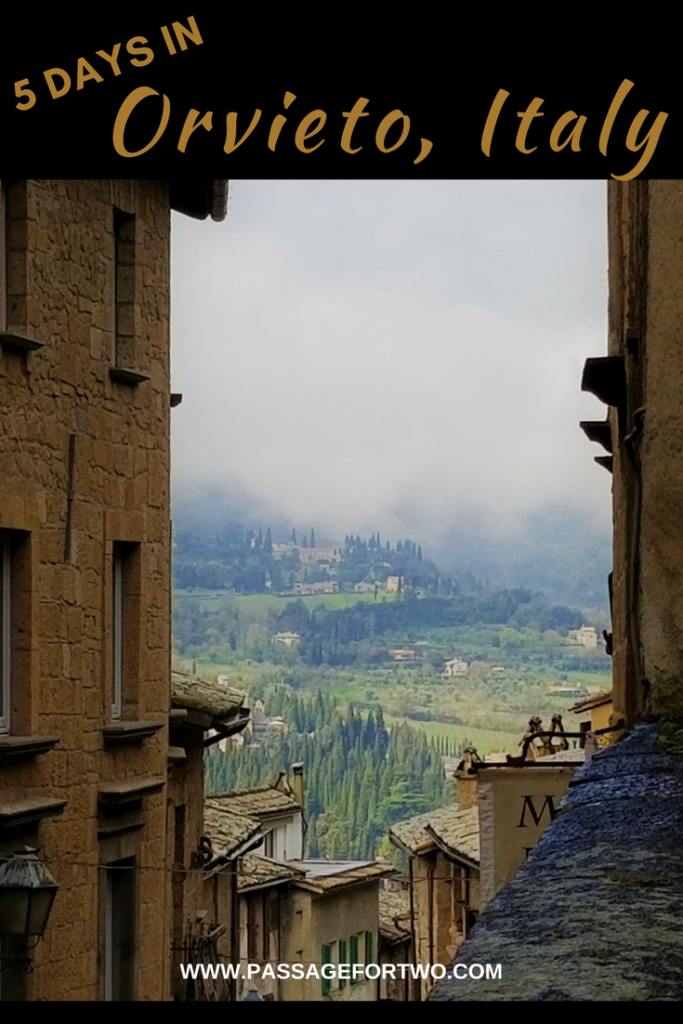
Read how we were romanced by Rome Part 1 and Part 2
Read about our week in Sorrento and Sant’ Agata
Read about Planning the Adventure of a Lifetime

